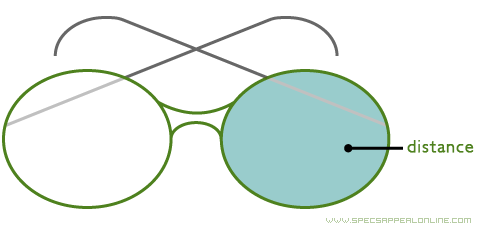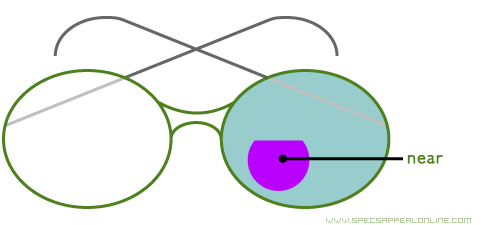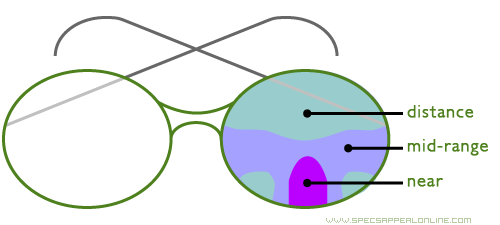
Below are some terms to help you to understand your prescription and what some of your options might be. There are many options available and we want to help you find the best choices for your unique lifestyle.
Single Vision
Single vision lenses are just that—they correct a single, particular vision such as distance if you're nearsighted (a condition called myopia) or close up if you're farsighted (a condition called hyperiopia).

Bifocal lenses
Bifocal lenses have two vision zones separated with a visible line. The bottom segment provides correction for close up. The top part of the lens provides correction for distance vision. Bifocals represent a different way of looking at the world, but most people adjust quite easily.

Progressive Lenses
More natural correction for all distances without older-style bifocal lines. Progressive lenses (also called "no-line bifocals" or "progressives" for short) correct for varying distances without the visible, older-style segment lines seen in bifocal or trifocal lenses.
Progressive addition lenses offer a continuous, gradual change in prescription strength from the lower (reading correction) to the upper (distance correction) portion of the eyeglass lens, providing correction for all distances.
Progressive addition lenses are preferred to bifocals or trifocals because they provide the most natural correction and are the most attractive to wear-and because they avoid the "image jump" experienced in bifocals or trifocals when eyes move from one distance zone to another. There are a variety of options available to meet your specific progressive lens needs, including thin and light lenses, impact-resistant polycarbonate, even adjustable tint lenses.

Transitions® Lenses
Transitions® Lenses are a smart choice for your everyday lenses offering everything you need in a corrective lens: visual acuity, visual comfort and convenient protection from the harmful effects of UV radiation and glare because they adjust to changing light conditions… going from clear indoors to getting as dark as a sunglass in bright glaring sunlight, automatically! (find out more...)
Anti-Reflective Lenses
Applying an anti-reflection coating to your lenses virtually eliminates reflections from the front and back of your lenses and allows more light to reach your eyes. This helps you in two ways. First, you see better, particularly in low-light or glare-prone situations such as driving at night. Second, you look better because people can see your eyes without seeing distracting reflections. Anti-reflection coatings increase light transmission through the lens, significantly reduce light reflections from the front of your lenses, and virtually eliminate the reflections from the back of your lenses. (find out more...)
Polarized Lenses
Get maximum protection from sun, reflected glare, and harmful UV rays-plus greater visual clarity. If you currently wear single vision, bifocals, trifocals, or progressive lenses. (find out more...)
High-index Lenses
High-index lenses are advanced plastic lenses that are thinner than conventional plastic or glass lenses. High-index refers to the lens materials index of refraction. A lens material's index of refraction describes the degree to which it refracts light. A high-index material has an index of refraction above conventional plastic (1.499). The higher index of refraction enables the material to bend light to a greater degree. This results in a thinner lens because less curvature is needed for a given power. In addition, high-index lenses are generally lighter than plastic because they require less material to produce the lens. In simple terms, this means that a high power can be captured in an ultra-thin lens that's very light and attractive. (find out more...)
Polycarbonate Lenses
Polycarbonate is a material that is ten times more impact resistant than conventional plastic or glass lenses. (find out more...)
Specs Appeal Online provides full warranty coverage on all items sold, including free in-store adjustments.










